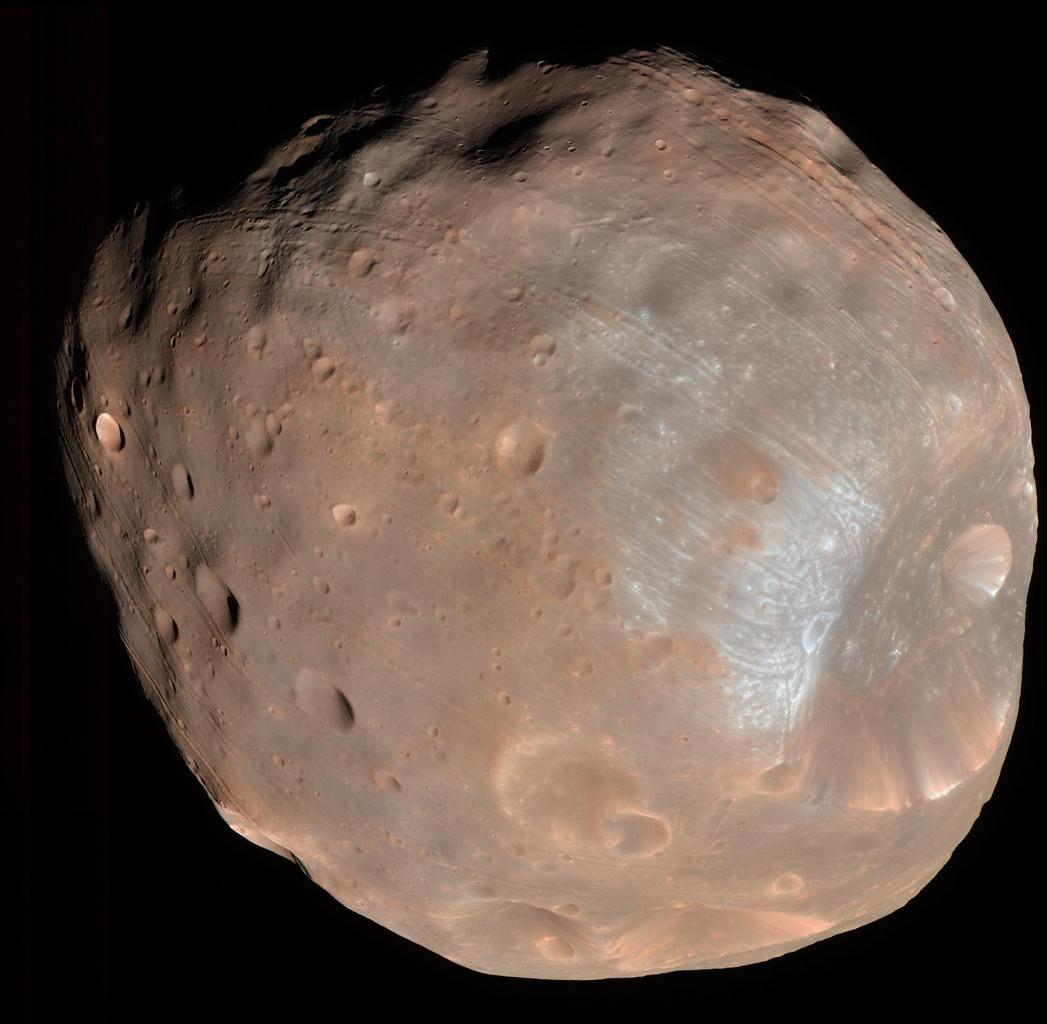Solar Wind Creates Electric Charge on Martian Moon Phobos
NASA has set its sights on the Martian moon Phobos as a potential initial base for human exploration of the Red Planet — but powerful solar eruptions could throw a wrench in this plan.
A new NASA study shows that solar wind — the stream of electrically charged particles that the sun blows out into space — creates a complex electrical environment on Phobos, which could possibly affect astronauts and any scientific equipment brought to the irregularly shaped moon in future missions.
"We found that astronauts or rovers could accumulate significant electric charges when traversing the night side of Phobos — the side facing Mars during the Martian day," William Farrell, lead author of the study from NASA's Goddard Space Flight Center, said in a statement. "While we don't expect these charges to be large enough to injure an astronaut, they are potentially large enough to affect sensitive equipment, so we would need to design spacesuits and equipment that minimizes any charging hazard." [Moons of Mars: Amazing Photos of Phobos and Deimos]
In theory, astronauts would travel to Phobos and remotely operate robots on the Martian surface, reducing the considerable time delay faced by Earth-based operators. NASA has considered Phobos as a possible initial base because its weak gravity makes it easier to land spacecraft, astronauts and supplies, according to the statement.
Phobos orbits incredibly close to Mars, and since it has no atmosphere and no magnetosphere it plows directly through streams of solar wind and absorbs the electrically charged particles on its dayside. This, in turn, leaves a void over its nightside. As a result, negatively charged electrons from the solar wind fill this void and statically charge the moon's nightside. This same effect also occurs in other large shadowed areas on Phobos, such as Stickney crater, according to the study, which was published Oct. 3 in the journal Advances in Space Research.
"We found that excess charge builds up in these regions during all solar wind conditions, but the charging effect was especially severe in the wake of solar eruptions like coronal mass ejections, which are dense, fast gusts of solar wind," Farrell said in the statement.
For the study, the researchers modeled the flow of the solar wind around Phobos, revealing that the buildup of static charge on the nightside and in shadowed regions can reach 10,000 volts in some materials, such as the Teflon suits worn by astronauts during the Apollo lunar missions, according to the statement.
Breaking space news, the latest updates on rocket launches, skywatching events and more!
Therefore, astronauts and rovers traversing these areas on Phobos could build up significant electric charges. For example, friction created by astronauts walking across the nightside surface could transfer charge from the dust and rock to their spacesuits. Then, when the astronaut touches something conductive, like a piece of equipment, it could release the charge — similar to static shock experienced after walking across a rug and then touching a metal doorknob.
Previous studies have shown that the same charging effect occurs in large shadowed craters in the north and south poles of Earth's moon. However, Earth itself has an atmosphere and a magnetosphere that defends against the effects of solar wind.
Follow Samantha Mathewson @Sam_Ashley13. Follow us @Spacedotcom, Facebook and Google+. Original article on Space.com.

Samantha Mathewson joined Space.com as an intern in the summer of 2016. She received a B.A. in Journalism and Environmental Science at the University of New Haven, in Connecticut. Previously, her work has been published in Nature World News. When not writing or reading about science, Samantha enjoys traveling to new places and taking photos! You can follow her on Twitter @Sam_Ashley13.

